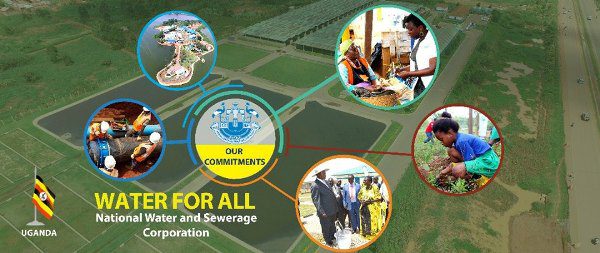

Inside NWSC’s 2020 Plan to Achieve 100%
By Softpower
NWSC targets to install 140,000 new water connections and 20,000 public stand pipes by the year 2020
In government’s bid to ensure that every Ugandan gets access to safe and clean water, the National Water and Sewerage Corporation (NWSC) is embarking on a major project to expand access across the country.
The Service Coverage Acceleration Project (SCAP100) as it is known looks to stretch water distribution to all the 15,500 villages across 62 districts in the country by the year 2020.



The project will give focus on villages with sufficient network but limited public water points, but also villages whose proximity is close to the network. It will also cover villages that are far but could be served from the existing network.
NWSC says that the project which is estimated to cost Shs 213.4 billion and more than half of this sum (58%) will be funded by the Corporation using internally generated revenue.
According to the Minister of Water and Environment, Sam Cheptoris, Government of Uganda is committed to ensure that every village in Uganda has a clean water source in order to achieve the National strategic aspiration of achieving 100% service coverage by 2020.
Under the SCAP100 project, NWSC will construct cost effective safe water supply schemes targeting the 12,000 villages which currently don’t have reliable supply and ensuring 100% system functionality.
In addition 140,000 new water connections and 20,000 Public Stand Pipes will be installed by the year 2020. This implies that each village in the country will have two public stand pipses which means that for every 200 people, there will be stand pipe.
NWSC will also install a total of 8,000 kilometers of pipe extension and intensification over a period of three years (2017 – 2020).
Last year, NWSC launched its Five Year Strategic Direction 2016-2021 which is aligned with government’s development plan focusing to achieve the lower middle income status by 2020, as well as the Sustainable Development Goals (SDG 6).
The Plan is hinged on; Smart systems, business continuity and infrastructure growth, financial growth and sustainability, customer and stakeholder delight, and productivity and capacity development.
Successes
Over the last 20 years, NWSC has expanded its footprint from 12 towns to 225 with service coverage growing from 48% to 76%, serving a total population of about 8 million. In the same period, water connections rose ten times to 485,000.
In a space of one year, the customer base has dramatically gone up from 470, 000 to 550,000 connections while the average new connections per annum have grown from 20,000 connections in 2013 to 45,000 connections.


To strike a balance so as not to sideline the poor households that might not afford private connections, NWSC has installed public taps where people can access water at subsidized tariffs.
Over 1,000 public stand posts were installed in the 2016/17 financial year alone compared to less than 100 of these stands per annum before 2014.
On the financial axis, the Corporation has remained diligent in ensuring financial sustainability, notwithstanding the accelerated geographical coverage. This they say discounts the myth that increased geographical expansion will compromises operational efficiency.
The NWSC annual income has increased from Shs 170 billion in 2013 to Shs 321 billion per annum. The target for the FY 2017/18 is to achieve a turnover of Shs 370 billion (VAT Exclusive) and a profit before depreciation of Shs 81 billion.
Average billings per month have grown by over 110%, from Shs 15.3 billion per month in 2013 to the current billing of Shs 32.5 billion per month. Collections on the other hand have grown by over 190%, from Shs 11.5 billion per month in 2013 to the current collections of Shs 33.5 billion per month.
Projects
Some of the ongoing projects being undertaken to expand access include the Kampala Sanitation Project that consist of the Nakivubo waste water treatment plant, Nakivubo and Kinawataka sewer project, Kinawataka lifting station and pumping mains)
NWSC is also improving water and sewerage services in the towns of Arua, Gulu and Bushenyi.
There is an ongoing construction of a Water Treatment Plant in East of Kampala (Katosi) and the accompanying transmission main to Kampala.
In addition, the Corporation is undertaking water and sanitation infrastructure upgrade and expansion in the 22 industrial and business parks identified by the Government in liaison with Uganda Investment Authority. Works in Namanve- Kampala and Soroti are in advanced stages, and plans are under way for the remaining parks.




